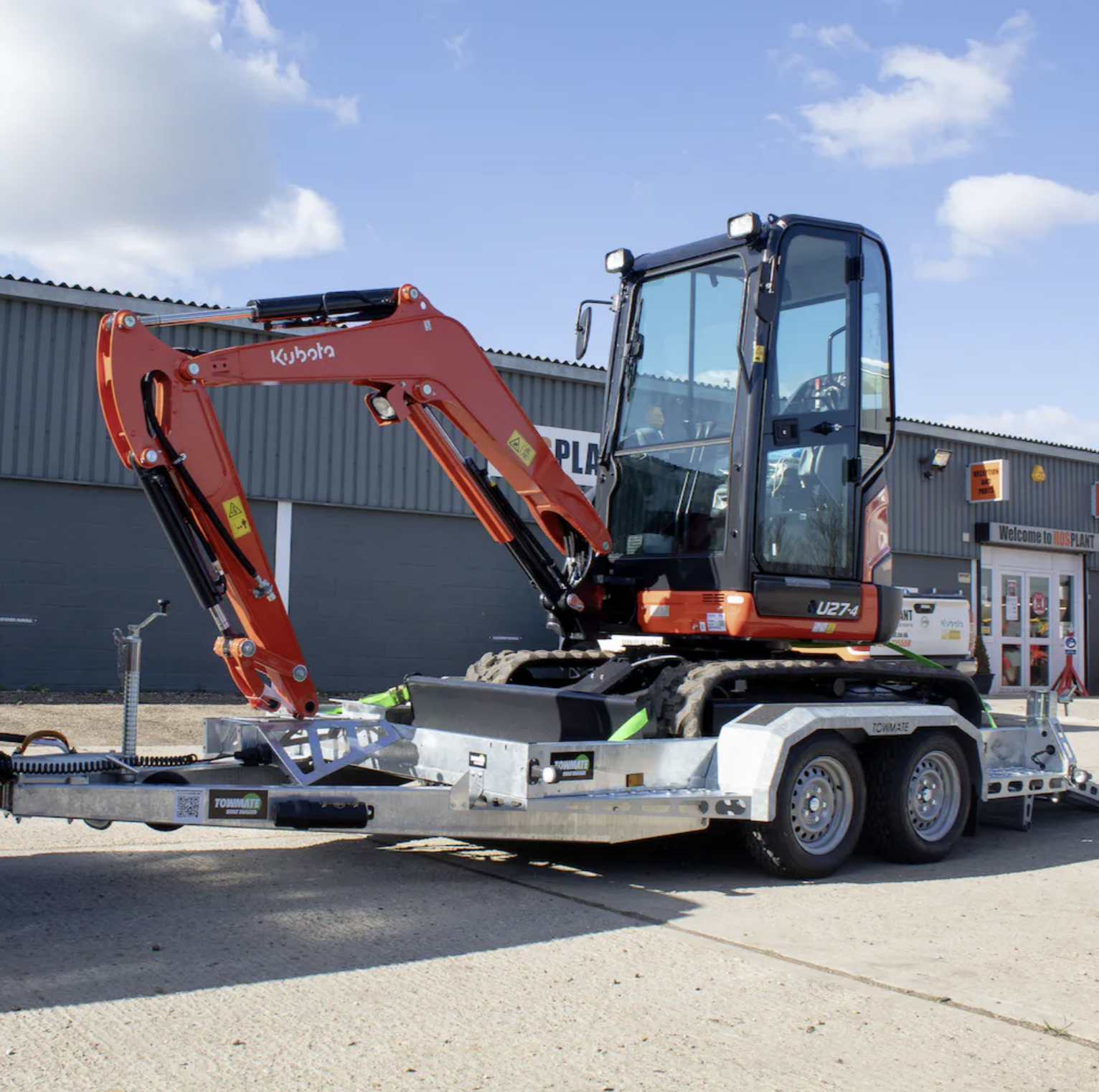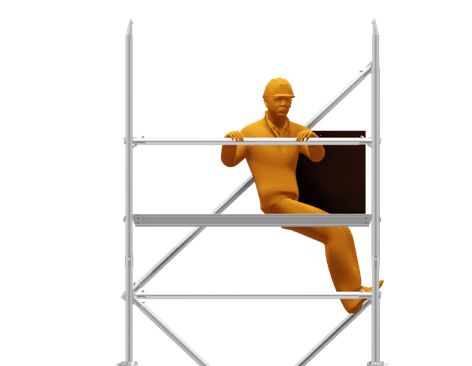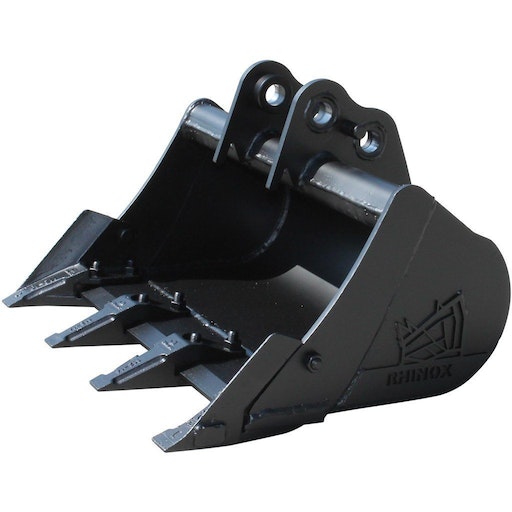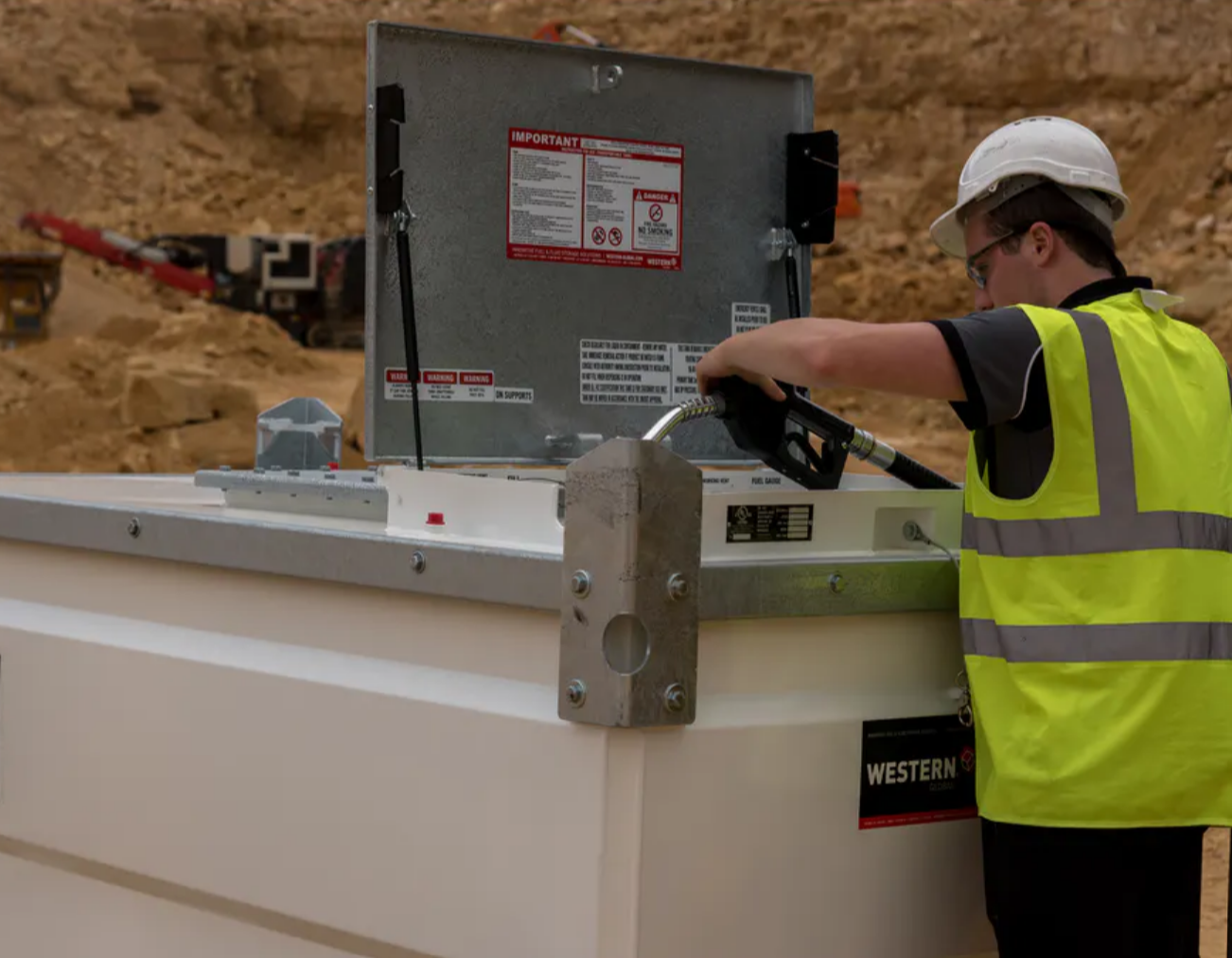
As winter descends upon construction sites, the drop in temperature can pose significant challenges for workers. Cold weather not only makes work less comfortable, but it can also create hazardous conditions. Proper heating on construction sites is crucial for maintaining productivity, ensuring worker safety, and protecting equipment from the harsh elements. In this article, we'll delve into the importance of construction site heating and explore various methods to keep workers warm and safe during the winter months.
The Importance of Construction Site Heating
1. Maintaining Productivity
- Cold weather can slow down construction projects significantly.
- Workers may find it difficult to perform tasks with precision and speed, and materials may become less pliable or prone to damage.
- By providing adequate heating, you can help maintain productivity levels, ensuring that projects stay on track.
2. Preventing Health Risks
- Working in freezing temperatures can lead to a range of health issues, including hypothermia, frostbite, and respiratory problems.
- By providing a warm environment, you reduce the risk of cold-related illnesses and injuries, promoting the well-being of your workforce.
3. Protecting Equipment
- Heavy machinery and construction equipment can be adversely affected by cold weather.
- Hydraulic fluids can thicken, and metal components can become brittle, increasing the risk of malfunctions and breakdowns.
- Heating equipment storage areas can help mitigate these risks.
Effective Construction Site Heating Methods
1. Temporary Enclosures
- Creating temporary enclosures around critical work areas is an effective way to retain heat.
- Tarpaulins or insulated panels can be used to create windbreaks, trapping warm air inside and keeping out cold drafts.
2. Portable Heaters
- Portable heaters are a versatile and practical solution for construction site heating. Propane, kerosene, and electric heaters are commonly used options.
- Ensure they are used in well-ventilated areas and follow safety guidelines to prevent carbon monoxide buildup.
3. Radiant Heaters
- Radiant heaters emit infrared radiation, which directly warms people and objects in their line of sight. They are highly efficient and can be particularly useful in large, open spaces where traditional heaters may be less effective.
4. Underfloor Heating
- For construction projects that involve concrete floors, underfloor heating systems can be installed.
- These systems use hydronic or electric heating elements embedded in the floor to radiate warmth from the ground up.
5. Heated Clothing and PPE
- Providing workers with heated clothing, such as heated vests or gloves, can significantly improve comfort and safety in cold conditions.
- Additionally, ensuring that workers have appropriate personal protective equipment (PPE) designed for winter conditions is crucial.
6. Timed Scheduling
- Scheduling work to take advantage of the warmest parts of the day, and ensuring that breaks are taken in heated areas, can help manage exposure to the cold.
7. Wind Protection
- Using windbreaks or barriers around the construction site can shield workers from biting winds, reducing heat loss and preventing wind chill.
Safety Considerations
When implementing construction site heating measures, it's essential to prioritise safety:
- Regularly inspect and maintain heating equipment to ensure proper functioning and minimise the risk of fires or gas leaks.
- Train workers on the safe operation of heating equipment and the importance of proper ventilation.
- Provide appropriate fire extinguishing equipment and establish emergency response protocols.
Types of construction site heating
Construction site heating can come in many shapes and sizes. City Hire have plenty of options so that you can protect your workers against the cold this winter.
Infrared heaters
Infrared heaters are widely used in the construction industry due to their numerous features and benefits. Here are some of the key advantages:
Features
- Radiant Heat Emission: An Infrared heater emits radiant heat, a form of energy that directly warms objects and people in its path, unlike conventional heaters that warm the air first.
- Energy Efficiency: They are highly efficient as they focus on heating objects, surfaces, and people without wasting energy on heating the air.
- Zonal Heating: Infrared heaters can be directed towards specific areas or zones, allowing for targeted heating. This is particularly useful in large construction sites where only certain areas need to be heated.
- Instant Heat: Unlike some other heating methods, infrared heaters provide almost instant warmth. They don't need time to warm up or distribute heat through a space.
- No Circulation of Airborne Particles: Since infrared heaters do not rely on air circulation, they don't spread dust or other airborne particles, making them a cleaner option for construction sites.
- Flexibility in Installation: They can be mounted on walls, ceilings, or placed on stands, providing flexibility in installation depending on the site's requirements.
- Durable Construction: Infrared heaters are often designed to be rugged and durable, suitable for the demanding conditions of construction sites.
- Low Maintenance: They typically have fewer moving parts compared to other heating systems, resulting in lower maintenance requirements.
Benefits
- Reduced Energy Costs: Infrared heaters can be more energy-efficient than traditional forced-air systems, as they focus on heating objects rather than the entire space.
- Improved Comfort: Because they provide instant warmth, workers can feel comfortable more quickly, which can lead to increased productivity.
- Less Heat Loss: Traditional heaters can lose heat through drafts, open doors, and poorly insulated areas. Infrared heaters reduce these losses by directly warming objects.
- Safe Operation: They don't rely on combustion or forced air, reducing the risk of fires and improving overall safety on the construction site.
- Environmentally Friendly: Infrared heaters do not release any emissions or pollutants into the air, making them an eco-friendly heating option.
- Even Heat Distribution: Infrared heaters provide more even heat distribution compared to some other heating methods, reducing cold spots within a space.
- Versatility: They can be used for spot heating in specific areas, or they can be strategically placed to provide heating for larger spaces.
- Silent Operation: Infrared heaters operate silently, which can be advantageous in environments where noise pollution needs to be minimised.
Overall, infrared heaters are a valuable tool in the construction industry, providing efficient and effective heating solutions that contribute to a safer and more comfortable working environment for construction workers.
Convector heater
A convector heater is a very popular option for construction site heating. Here's why:
Features
- Convection Heating: An electric convector heater operates on the principle of convection, where cool air is drawn in, heated, and then circulated back into the room.
- Portability: A convector heater is designed to be a portable heater, allowing them to be easily moved around the construction site as needed.
- Thermostatic Control: They often come equipped with thermostatic controls, enabling precise temperature regulation for enhanced comfort.
- Compact Design: A convector heater will typically have a slim and compact design, making them suitable for areas with limited space.
- Quiet Operation: They operate quietly, which is beneficial in environments where noise levels need to be kept to a minimum.
- Overheat Protection: Many models have built-in safety features like overheat protection, which automatically switches off the electric room heater if it gets too hot.
- Variable Heat Settings: A Convector heater will often come with multiple heat settings, allowing users to adjust the intensity of the heat output.
- Easy Installation: As it is a small room heater, the electric convector heater is generally straightforward to install and does not require complex setup procedures on site.
Benefits
- Even Heat Distribution: Convector heaters distribute heat evenly throughout a room, helping to eliminate cold spots and ensure consistent warmth. A serious candidate for best room heater.
- Quick Warm-Up Time: They warm up relatively quickly, providing a comfortable environment in a short span of time.
- Cost-Effective: Convector heaters are often more energy-efficient than some other heating methods, potentially reducing energy costs.
- No Noise Pollution: Their quiet operation makes them suitable for environments where noisy equipment or machinery is in use.
- Versatility: They can be used in a variety of spaces, from offices to temporary construction structures, providing flexibility in their application.
- Low Maintenance: A convector heater generally has fewer moving parts, reducing the need for regular maintenance.
- Safe Operation: They are designed with safety features such as tip-over protection and overheat protection, reducing the risk of accidents.
- No Ventilation Required: Unlike some other heating methods, convector heaters do not require ventilation systems, making them suitable for enclosed spaces.
Ceramic heater
Ceramic Heaters radiate a high concentration of heat waves via ceramic elements. A ceramic heater is used in localised drying areas and will warm objects even in areas affected by draughts and air movement.
Features
- Ceramic Heating Element: Ceramic heaters utilize a ceramic heating element to generate heat. This element is known for its high heat output and durability.
- Compact and Portable: They are typically designed to be compact and lightweight, making it a brilliant portable heater that can be easily placed in various locations around a construction site.
- Fast Heating: A ceramic heater has a rapid warm-up time, providing almost instant heat once turned on.
- Adjustable Thermostat: Many ceramic heaters come with adjustable thermostats, allowing users to set their desired temperature for precise control over heating.
- Overheat Protection: They often include safety features such as overheat protection, which automatically shuts off the heater if it reaches unsafe temperatures.
- Cool-Touch Housing: The exterior of ceramic heaters usually remains cool to the touch, reducing the risk of burns or accidents.
- Quiet Operation: They operate quietly, which is beneficial in environments where noise levels need to be kept to a minimum.
- Directional Heat Flow: Some models have adjustable louvers or oscillation features, enabling users to direct the heat flow towards specific areas.
Benefits
- Energy Efficiency: Ceramic heaters are known for their energy efficiency, as they convert electricity into heat at a high rate, minimizing energy wastage.
- Even Heat Distribution: They provide consistent and even heat distribution across a space, eliminating cold spots.
- Cost-Effective: Due to their efficiency, ceramic heaters can potentially lead to lower energy bills compared to other heating methods.
- Quick Warm-Up Time: They warm up rapidly, allowing for almost instant comfort in chilly conditions.
- Versatility: Ceramic heaters are versatile and can be used in a variety of construction site settings, including temporary structures or workshops.
- Low Maintenance: They generally have fewer moving parts, which reduces the need for regular maintenance.
- Safe Operation: The cool-touch housing and overheat protection features make ceramic heaters safer to use, especially in busy construction environments.
- No Emissions or Fumes: Unlike some other heating methods, ceramic heaters do not produce emissions, making them suitable for enclosed or poorly ventilated spaces.
Gas space heaters
Space Heaters are gas fired forced air heaters used to warm a large area quickly. Commonly used to heat warehouses and other industrial spaces, gas space heaters are portable and highly effective.
Features
- Gas-Powered: Gas space heaters operate on natural gas or propane, providing a reliable and powerful heat source.
- Variable Heat Output: They often have adjustable settings, allowing users to control the level of heat output based on the requirements of the space.
- Portable Options: A gas heater is designed to be portable, enabling them to be moved around the construction site as needed.
- Ventilation Requirements: An indoor gas heater typically requires proper ventilation to ensure the safe release of combustion byproducts, such as carbon monoxide.
- Ignition Mechanism: They may have different ignition mechanisms, including electronic ignition or pilot lights, depending on the model.
- Durable Construction: Gas space heaters are built to withstand rugged construction environments, often featuring sturdy materials and construction.
- Automatic Shut-off: Many modern models are equipped with safety features like automatic shut-off in case of overheating or low oxygen levels.
- Thermostatic Control: Some gas heater models come with thermostatic controls, allowing for precise temperature regulation.
Benefits
- High Heat Output: Gas space heaters provide a powerful and consistent source of heat, making them suitable for larger spaces and colder environments.
- Quick Warm-Up Time: They offer rapid warm-up times, even as a small room heater. This allows for near-instant comfort in chilly conditions.
- No Dependence on Electricity: Gas space heaters do not rely on electrical power, making them a reliable heat source even in areas with limited electrical access.
- Cost-Efficient: They can be cost-effective in terms of fuel consumption, especially in areas where natural gas or propane is readily available.
- Suitable for Large Spaces: Gas space heaters are well-suited for heating large, open construction areas or workshops.
- Versatility: They can be used in both temporary and more permanent construction settings.
- Continuous Operation: As long as there is a steady supply of gas, these portable heaters can operate continuously without interruption.
- Minimal Electrical Load: Since they don't rely on electricity for operation, gas space heaters do not add to the electrical load of a construction site.
Industrial fan heater
Industrial Fan Heaters are heavy duty, compact and portable units that provide fast moving hot air. They are ideal for localised drying of an object or area as well as larger heating applications.
Features
- Fan-forced Heating: Industrial fan heaters utilize a fan to force air over a heating element, distributing warm air quickly and efficiently.
- Variable Heat Settings: They often come with adjustable heat settings, allowing users to control the level of warmth according to specific requirements.
- Sturdy Construction: Industrial fan heaters are designed to withstand the rugged conditions of construction sites, typically featuring durable materials and robust build quality.
- Thermostatic Control: Many models include thermostatic controls, enabling precise temperature regulation for optimal comfort.
- Portable Options: An Industrial fan heater is a great option for a portable heater on site. Some models are designed with handles or wheels for easy portability, allowing them to be moved around the construction site as needed.
- Safety Features: Modern industrial fan heaters often include safety features such as overheat protection and automatic shut-off in case of tipping.
- Quiet Operation: They are designed to operate with relatively low noise levels, which can be crucial in environments where noise levels need to be kept to a minimum.
- Directional Airflow: Many models have adjustable louvers or directional settings, allowing users to direct the flow of warm air towards specific areas.
Benefits
- Rapid Heating: Industrial fan heaters warm up quickly and provide immediate comfort, making them ideal for spaces that require fast temperature adjustment.
- Even Heat Distribution: They distribute heat evenly throughout a space, eliminating cold spots and ensuring consistent warmth.
- Versatility: Industrial fan heaters can be used in various construction site settings, including workshops, temporary structures, or areas with limited insulation.
- Cost-Effective: They can be energy-efficient, especially when compared to less efficient heating methods, potentially leading to lower energy costs.
- No Ventilation Requirements: Unlike some other heating methods, industrial fan heaters do not require specific ventilation systems, making them suitable for enclosed spaces and another strong candidate for best room heater.
- No Open Flame: Industrial fan heaters do not rely on an open flame, reducing the risk of fire hazards compared to some other heating options. Ideal if you are looking for a small room heater.
- Low Maintenance: They generally have fewer moving parts, which means they typically require less maintenance compared to more complex heating systems.
- All-Season Use: Some industrial fan heaters have the capability to operate as fans without the heating element, making them useful for year-round ventilation.
Bin Box Heater
Bin Box Heaters are gas fired and are an excellent solution for heating warehouses and small factories. These units require no power input enabling them to be set up anywhere.
A bin box heater in the construction industry offers several features and benefits:
Features
- Temperature Control: Bin box heaters typically come equipped with adjustable temperature controls, allowing users to regulate the heat output based on specific requirements.
- Safety Features: Many bin box heaters are designed with safety features such as overheat protection and automatic shut-off mechanisms to prevent accidents and damage.
- Portable Design: They are often designed to be easily portable, allowing for flexibility in placement and usage across different construction sites or areas within a site.
- Durable Construction: These heaters are built to withstand the rugged conditions of construction sites, often featuring sturdy and durable materials.
- Compact Size: Bin box heaters are generally compact in size, making them easy to store and transport between different locations.
Benefits
- Temperature Regulation: Bin box heaters help maintain a consistent and comfortable temperature within storage areas, ensuring that materials or equipment are not negatively affected by extreme cold.
- Prevents Freezing: In colder climates, bin box heaters are crucial for preventing the freezing of construction materials and equipment, which could otherwise lead to delays and damage.
- Improves Efficiency: By maintaining an optimal temperature, bin box heaters can enhance the performance and longevity of tools and equipment, ultimately leading to increased productivity.
- Reduces Downtime: They help minimise downtime due to weather-related issues, allowing construction projects to progress smoothly even in adverse conditions.
- Protects Materials: Bin box heaters safeguard sensitive materials, like adhesives, paints, or other temperature-sensitive substances, from spoilage or degradation due to extreme temperatures.
- Health and Safety: Keeping construction workers in a comfortable temperature range contributes to their well-being, reducing the risk of cold-related illnesses or injuries.
- Cost-Efficient: While there is an initial investment, bin box heaters can save money in the long run by preventing damage to expensive equipment and materials.
- Compliance with Regulations: In some cases, maintaining specific temperature ranges is a legal requirement, particularly when dealing with certain materials or chemicals.
In summary, a bin box heater is a valuable tool in the construction industry, offering temperature control, safety features, and portability, while providing benefits such as improved efficiency, reduced downtime, and protection of materials and equipment.
Conclusion
Construction site heating is not merely a luxury but a necessity. It ensures that construction projects continue without interruption, workers are kept safe and healthy, and equipment remains in optimal working condition. By investing in proper heating methods, construction companies can ensure the success of their projects, even in the harshest winter conditions.










